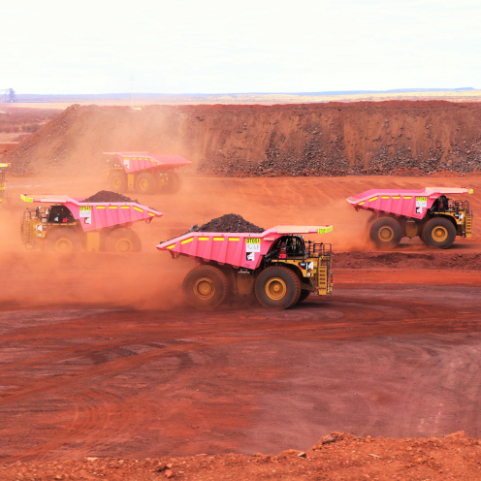Steel
POSCO reaps rewards from Australia’s Roy Hill investment
To collect more than $400 mn of dividends this year, while securing stable iron ore supply source
By Oct 24, 2021 (Gmt+09:00)
2
Min read
Most Read
LG Chem to sell water filter business to Glenwood PE for $692 million


Kyobo Life poised to buy Japan’s SBI Group-owned savings bank


KT&G eyes overseas M&A after rejecting activist fund's offer


StockX in merger talks with Naver’s online reseller Kream


Mirae Asset to be named Korea Post’s core real estate fund operator



POSCO, the world’s fifth-largest steelmaker by output, has reaped the rewards of a $1.1 billion investment it made in Australia’s Roy Hill mine a decade ago. South Korea’s top steel producer is set to pocket about $400 million this year from Roy Hill dividends while reporting record earnings as it has secured a stable iron ore supply amid surging prices of the raw material.
POSCO is expected to collect a total 470 billion won ($399.7 million) of dividends from Roy Hill Holdings, the mine’s operator, in the first three quarters of this year, including 320 billion won in the first half, according to industry sources.
The Roy Hill mine is the world’s largest single mine with indicated and inferred reserves of 2.3 billion tons. POSCO invested 1.3 trillion won to acquire a 12.5% stake in Roy Hill in 2010 as it sought to secure a stable supply source of iron ore.
The acquisition was regarded as a failed investment about three to four years ago. Iron ore prices tumbled to around $50 per ton in 2015 from $130-$170 in the early stage of the investment, casting doubt over Roy Hill’s profitability.
UGLY DUCKLING
But it did not take long to prove the success of the investment. The Roy Hill mine, which started production in 2015, met an initial output target of 55 million tons of iron ore a year in 2018. It currently produces 60 million tons of iron ore in the Pilbara region of Western Australia annually.
Roy Hill Holdings reported 1.6 trillion won in net profit in 2019 when iron ore prices recovered to over $100. The profit rose to 2.3 trillion won last year when the prices grew to the mid-$100s, according to POSCO. Roy Hill Holdings earned such a profit in the first half of this year as prices of the raw material exceeded $200. The stellar performance helped POSCO pocket big money from dividends.
POSCO reported record-high earnings with an operating profit of 7 trillion won in the first three quarters as it secured a stable iron ore supply source through the investment in Roy Hill, the industry sources said. POSCO procures 16 million tons, about 25% of its total iron ore use, from Roy Hill.
The South Korean steelmaker has made 32 investments in projects to develop resources by the first half of this year, starting from an investment in an Australian coal mine in 1981. POSCO, which has recovered all of the costs for those investments, is self-sufficient for 40% of its raw materials.
“The Roy Hill investment is more than just a profit source with dividends since it stably supplies raw materials,” said a POSCO source. “It is becoming POSCO’s core competitiveness in the steel market where cost competition is intensifying.”
Write to Jung-hwan Hwang at jung@hankyung.com
Jongwoo Cheon edited this article.
More to Read
-
 EarningsPOSCO emerges from pandemic blues with record third-quarter profit
EarningsPOSCO emerges from pandemic blues with record third-quarter profitOct 13, 2021 (Gmt+09:00)
3 Min read
Comment 0
LOG IN


